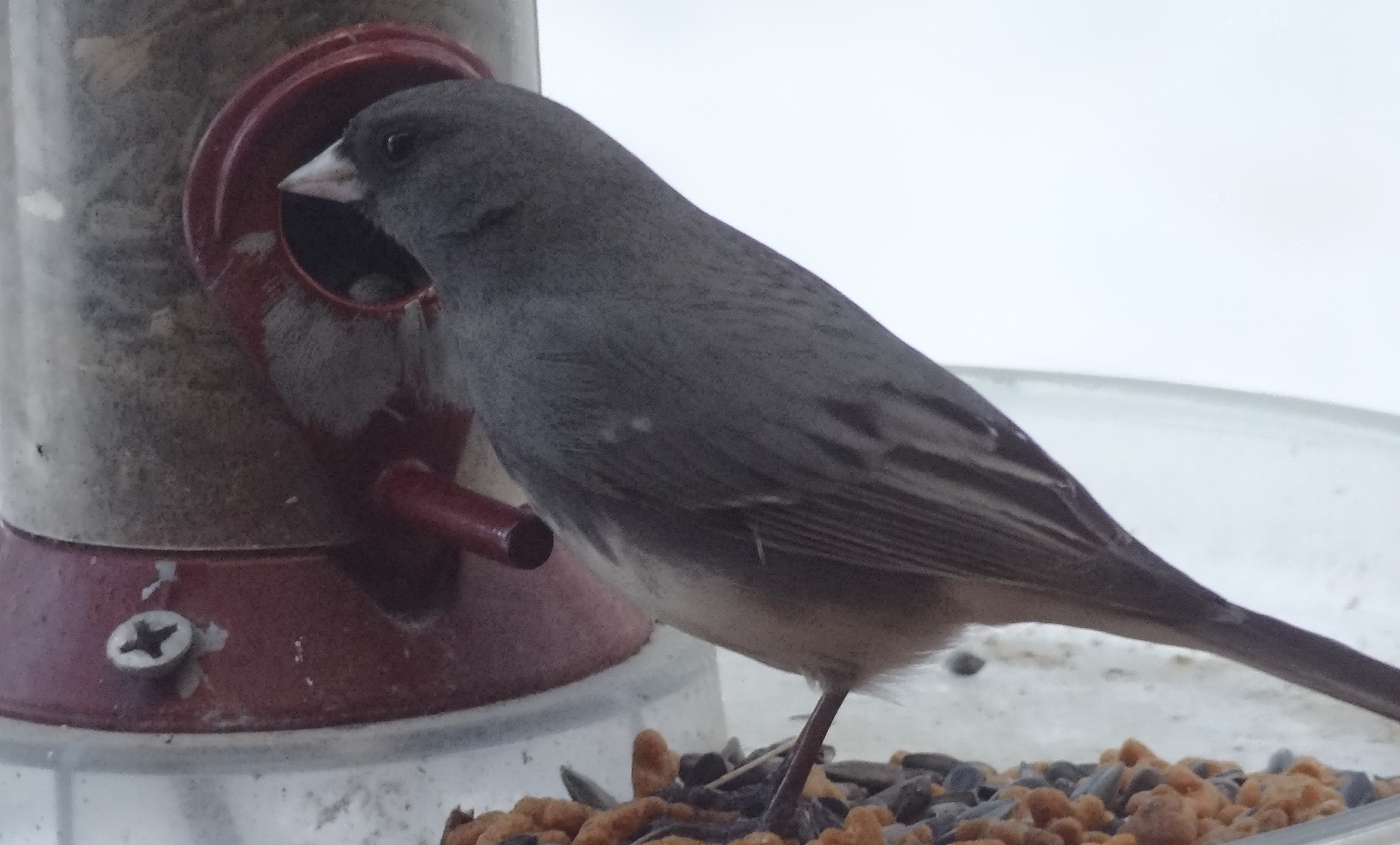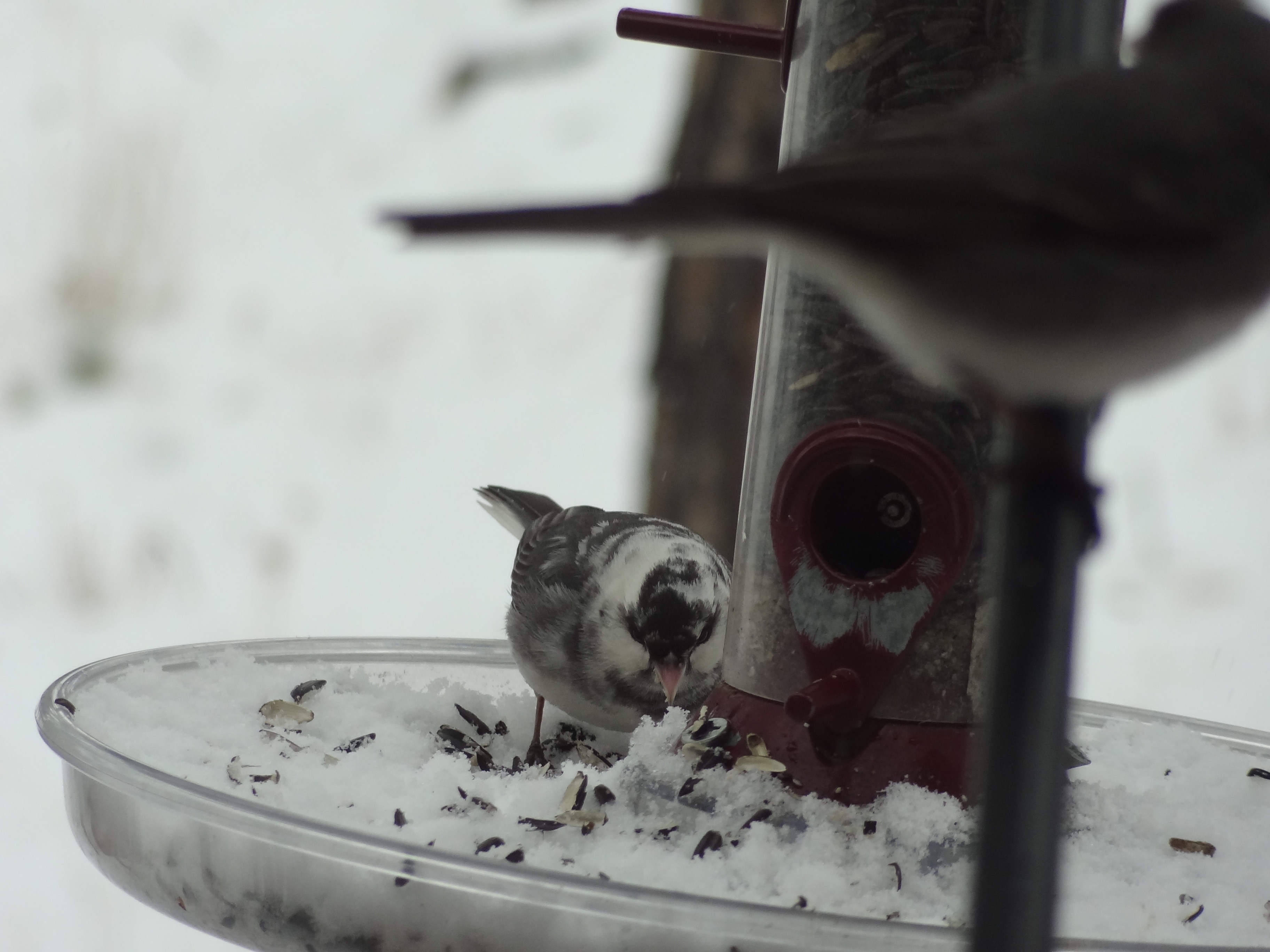As a child, every once in a great while, my parents would treat us kids with a box of Cracker Jack. For those of you not in the know, Cracker Jack is a type of caramel/molasses-coated popcorn, into which is added peanuts coated with a sweet glaze. Now, I must admit, I just remember the Surprise Inside…Guess What’s Inside? label in blue and white on the outside of the Cracker Jack box. I can’t really recall any of the prizes. But at the time, the best part was the moment when I discovered the prize amidst the mass of caramel corn crowding my fingers: a little red-and-white-striped package about the size of a postage stamp.
Having a bird feeder is a bit like indulging in that box of sweetness; when you look out the window on a dreary gray day and see an entire flock of goldfinches lighting up the entire tube, your eyes savor and absorb the wondrous sight. And, in the Black Hills, the other “caramel corn” commonly visiting the bird feeder include white and red-breasted nuthatches, pine siskins, chickadees, and dark-eyed juncos. You enjoy watching the “peanuts”: the occasional blue jay, gray jay, hairy or downy woodpeckers stopping by, causing the feeder to swing from side to side as they wolf down one sunflower seed after the next.
And then that moment of excitement when you find the prize…

This strikingly-colored junco (above)—a bird like no other

White-winged variety of dark-eyed junco: in the Black Hills, juncos with this coloration are common.
Most dark-eyed juncos in the Black Hills are soot-colored birds that look like their bellies are dipped in snow, their wings lightly sprinkled with snowflakes. The bird in the top photo, however, is a zebra of different stripes.
According to the Cornell Lab of Ornithology, there are fifteen described races of dark-eyed juncos. These birds come in many different variations of color, but the following five are some of the more distinguishable ones: slate-colored, white-winged, Oregon, pink-sided, and gray-headed. The Oregon subspecies of dark-eyed junco is the most common one with a truly black head (vs. dark gray or light gray), but its wings tend toward brown than gray (unlike the bird in the photo, which has gray feathers). Perhaps the bird in the photo is a hybrid between Oregon and another subspecies, and touched with leucism?
The online Merriam Webster Dictionary defines leucism as an abnormal condition of reduced pigmentation affecting various animals (such as birds, mammals, and reptiles) that is marked by overall pale color or patches of reduced coloring and is caused by a genetic mutation which inhibits melanin and other pigments from being deposited in feathers, hair, or skin.
If a bird is affected by leucism, it will usually have paler or white feathers than other birds of the same species. This bird in the photo has a variety of things going on…there are patches of white where the feathers should be gray, or possibly black, which would support the leucism idea, but the bird in the top photo has pure black feathers on its crown plus gray feathers on its sides (the widespread gray is uncharacteristic of the Oregon subspecies), which suggests a possibly a hybrid amongst one or more of the junco subspecies…?
No matter what its genetic makeup, this dark-eyed junco is certainly a beautiful creature, a prize well beyond what I could hope to find in any box of snacks.
Wishing you joy as you go through your day, that you may find a delightful Surprise Inside.
…Who knows what it will be?

References
Dunn, J.L., and Alderfer, J., 2011. National Geographic Field Guide to the Birds of North America. National Geographic Society
The Cornell Lab of Ornithology. https://www.allaboutbirds.org/guide/Dark-eyed_Junco/id
Merriam-Webster. https://www.merriam-webster.com/dictionary/leucism

2 replies on “Of Cracker Jack and Flying Prizes”
Indeed a Cracker Jack of a bird! What a delightful discovery.
LikeLike
Thank you.
LikeLike